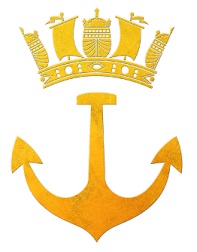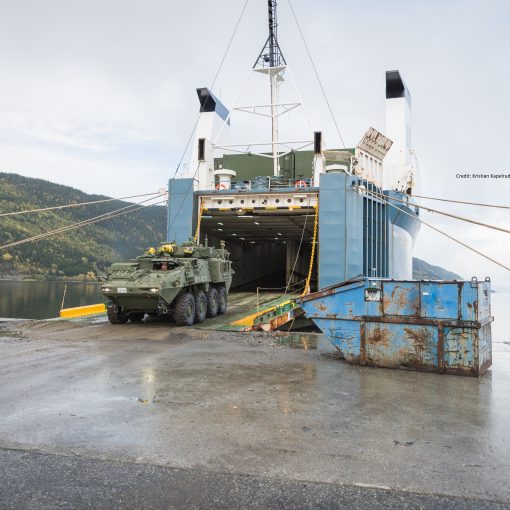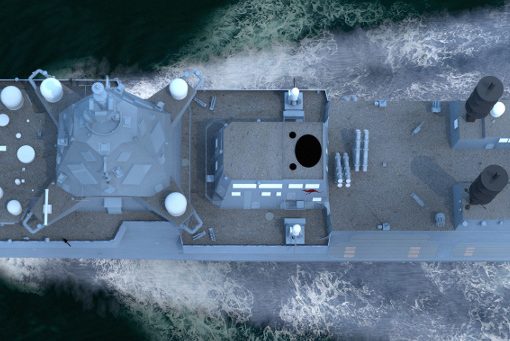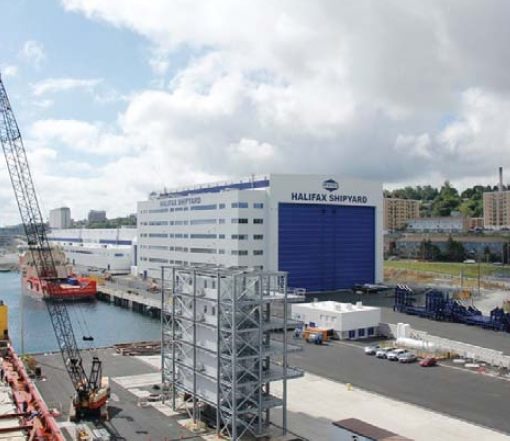By Dan Middlemiss, 24 April 2023
As it promised, the Australian government has released its much anticipated Defence Strategic Review (https://www.defence.gov.au/about/reviews-inquiries/defence-strategic-review). The report paints a sobering assessment of the current state of Australia’s defences, and outlines a series of corrective steps to address glaring shortcomings. In the maritime sphere, the report recommends sweeping shipyard reform to improve this vital defence industrial sector (pp. 78-79).
What is most striking, however, is the report’s blistering critique of Australia’s capability acquisition system as a whole. Here are a few excepts (pp. 91-92):
“12.3 Once projects have entered the IIP, capability managers have too much latitude to make design changes, tinker with capability outcomes, and indulge in the quest for perfectionism. These behaviours result in delay and strategically significant capability outcomes not being achieved in a timely manner, or at all.
12.4 Clear direction from the Government and clear expectations placed on Defence for acquisition and delivery are critical to resolving this issue. To achieve this, in the first instance a threshold judgement must be made at the joint senior level, and agreed to by the Government, on what minimum viable capability is required and what is readily available.
12.5 When capability is readily available there should be an emphasis on getting it into service without delay and achieving value for money. Defence must, where possible, acquire more platforms and capabilities via sole source or off-the-shelf procurement, and limit or eliminate design changes and modifications. When subsequent design changes or enhancements to capabilities are proposed, we recommend these be independently tested by sceptical and trusted advisers.
12.6 In our new strategic circumstances the focus must be on the capabilities of the Enhanced Force-In-Being, with an emphasis on incremental upgrades through the life of a capability rather than pursuing longer-term solutions. This does not mean that Defence can lose sight of the future force’s requirements, but rather it must rebalance priorities for our current strategic circumstances
12.8 Australian industry content and domestic production must be balanced against timely capability acquisition. Previous government direction to meet mandated Australian industry content skewed the capability acquisition process so that capability outcomes were secondary to creating opportunities for Australian industry – even when a clear rationale was lacking.
12.10 Defence must consider Australian industry content when it makes sense and delivers capability outcomes on time. It is essential to ensure Australian sovereign defence industry capability is supported where it makes strategic sense.”
Canada could learn a great deal from this wide-ranging review.






33 thoughts on “Australia Releases Defence Strategic Review”
One thing to learn is that apparently the previous government made sweeping statements about the capabilities that it planned to purchase without however budgeting the money needed to pay for those capabilities. Thus, the current government is having to seriously downsize a number of high profile army projects (SP howitzers and IFVs being two).
Not sure that this approach is better than Canada’s, which has fewer announcements that get the military community’s blood pumping but does actually allot the funds required by the announced purchases.
Les,
I think the Australian Review goes much further than you imply. Instead of the old “shaving the ice cube” approach whereby Army, Navy and Air Force programs shared equally in the cutbacks, the Australian government has chosen a more focused military, one which emphasizes new navy (submarines and frigates) and air force (F-35) projects over traditional army ones. No more balanced forces; instead, power projection forces.
And you are right about Canada’s system of allotting funds (of course never enough because program budgets keep escalating), and then returns much of the capital funds unspent each year because our sclerotic procurement apparatus is unable to spend the allotted money.
The excerpted paragraphs from the Australian Review appear to indicate that the current Aussie government wants to transform its defence procurement system into one that actually produces and delivers capabilities, rather than one that simply pampers a protected domestic defence industry.
A tough ask, I know, but at least the Australians are trying – unlike ourselves.
Good morning Dan,
You are quite correct that the Australian review covers much ground. I only wanted to point out one lesson that often gets missed when people talk about some country’s sweeping new defence buildup – announcements must be supported by money.
The new Australian strategy is simply a return to the one before the current one (air force and navy defend the sea approaches while the army languishes). In that sense it does not represent new thinking.
Time will tell if it can change its equipment procurement.
One problem with building unbalanced forces is that such a process assumes that future crises will appear in the shape predicted and necessitate only the forces that have been built.
Reality is often very different. Balanced forces have the advantage of being better able to make some response to the unexpected crisis.
Essentially, unbalanced forces assume omniscience on the part of the force designers about how the future will unfold. The Canadian Army went through the same mindless stage in the 1990s and early 2000s with regard to tanks and associated heavy equipment. Thankfully, we had not replaced the Leopard 1s with the useless MGS before the former were required in Afghanistan.
Hello Les –
Regarding your comments: “One problem with building unbalanced forces is that such a process assumes that future crises will appear in the shape predicted and necessitate only the forces that have been built”; “Essentially, unbalanced forces assume omniscience on the part of the force designers about how the future will unfold”.
The point is well-taken, but I see logic in the Aussie approach because the defence of the homeland and the approaches to to it will always rank above missions that are rather easily viewed as discretionary. Building a hardened, networked army around 450 IFVs, M1A2 SEPs, etc., always struck me a weird, given that Australia’s neighbourhood is filled with water and islands. A mechanized land force equipped to fight a capable ground opponent in Europe or the MidEast would surely rank below the ENDURING need to secure the approaches and the wider neighbourhood – in this case against the expanding aerospace and naval power of a revisionist PRC. It is the latter tasks that is compulsory.
True, this takes Aussie defence policy back to an earlier era. But this doesn’t amount to any sort of intellectual or policy “regression”. Given the strategic landscape, one could call it wisdom.
So, let Canada consider asymmetry in its force development. If the defence of the homeland and the continent demands more attention for aerospace and naval forces, this is consistent with the need to to carry out what most would consider to be compulsory missions. Less attention to the force development of the Cdn Army is defensible on these grounds, as most of its activities are meant for external duties, which I would argue are more discretionary (although the distinction is not always so black-and-white.)
I say this not to disparage the Army, which is arguably too small and under-equipped as it is. But barring a larger budget – or at least a budget that we can spend in the course of a fiscal year – it does not surprise me that Minister Anand has been busy announcing programs that benefit the RCAF. Meanwhile, nothing has been heard on the replacement of those 30-odd Armoured Combat Support Vehicles we sent to Ukraine. And DND is forced to UOR its anti-armour and ground-based air defence needs because the projects to satisfy them languish in the bowels of the procurement system. Herein lies a degree of proof that, even if the government does not realize it is doing so, that it is setting rational priorities.
Good morning Bill,
In a general sense you make very valid points. I also was struck by the Australian desire for very heavy IFVs that would be hard to sealift, even with Canberra-class LHDs.
However, ‘discretionary’ expeditionary deployments suddenly may not be discretionary to the government of the day. The Australian effort in Timor Leste in 1999 made this point in spades, while showing up the Australian Army’s many weaknesses. It would have been far harder to accomplish this mission if Australia had had no AFVs. The trick was having the correct AFVs for the task.
Powerful modern naval forces offer little ability for Canada to show NATO solidarity during the Ukraine war. Soldiers deployed in Latvia do this. However, they must be properly equipped to be a credible contribution. In another crisis, the naval forces may be the most valuable contribution that Canada can make. Time and place and the nature of the crisis are all important.
Weighting resources more to the higher priority tasks is sensible until it results in such an imbalance that future crisis managers are deprived of otherwise perfectly valid and achievable options because of past, short-sighted decisions.
I believe that we must reject those who argue for “making the tough choices now because I know how the future will unfold.” The Canadian Army went through this very exercise in the 1990s and early 2000s with the most amazing efforts of twisted logic and trying to “fairy dust” away real concerns and problems. Thankfully, inertia meant that it had not gotten too far along its all-wheeled army path before it needed to change course back towards the middle ground.
Balance does not mean an equal split of budgets. Instead, I feel that it means having a broad range of useful capabilities.
I just watched a round table discussing this topic by ABC and one of the commentators made a very key point that I think also applies to Canada. He stated that (words to the effect as I can’t recall exactly) Australia’s logistical capability to deploy the army overseas is incredibly limited. They simply don’t have the ships necessary for the task. Now they do have one LPD – HMAS Choules, a bay class – and while these are good ships they simply cannot carry numbers required for a meaningful force to be deployed
That rings a lot of bells here in Canada as we do not have anything near that capability. Indeed much smaller nations such as the Dutch Italians even some 3rd world countries do have that capability and I believe that we should also look at this area as well.
I’m not suggesting we go and purchase a couple of mistrals tomorrow. What I’m suggesting is perhaps a couple of RoRo ships that can be modified and integrated with Asterix to provide that role as auxiliaries. That would also increase capability in HA/DR missions and also if we look at the way the British Point class are used with them being in commercial service when not needed it would potentially pay for itself.
An interesting option I think.
It looks like the French have gotten over being miffed about the Australian cancellation of the Shortfin Barracuda contract: “We can always be assured of one certainty, as it has been for over 100 years: Australia will need France, and France will need Australia” (https://www.defence.gov.au/news-events/news/2023-05-01/stopover-celebrates-shared-values; https://www.defense.gouv.fr/marine/actualites/mission-jeanne-darc-2023-embarque-officiers-australiens). Not wanting to sound overly cynical, I wonder though: might the French have something they may want to sell to Australia in light of the latter’s Defence Strategic Review?
This Australian Defence Strategic Review is both critical and “far-reaching” with the Australian government either “agreeing or agreeing-in principle” with “all” recommendations put forth. One can only hope that DND’s own Strong, Secure Engaged update this year will be equally “critical” and “far-reaching” for the future of the CAF and all Canadians.
I believe the Update has been written (some time ago, in fact) but is being embargoed because it is judged politically inconvenient to release it. This is because it has a significant dollar figure attached to it, and the government is fearful of the public’s reaction to larger outlays for defence.
The Minister of National Defence justifies the delay claiming to want to give the public a chance to weigh in, but in reality it’s just more stone-walling.
‘Twas ever thus: government worrying more about political optics than articulating strategy, even when the latter is felt to be in the national interest, and is desperately needed / overdue.
Any proof to support your belief?
Agree totally with you Barnacle Bill! I would think the Canadian government would want to release the updated SSE document as soon as possible to give the CAF its “marching orders” for the next decade or so. The fact that it has been completed but not released is very puzzling, dollar figure or not! The only other explanation besides the government worrying about “political optics” could be that they are waiting for the new security policy to be released first to marry up with the SSE. The MND wanting to give the Canadian public a chance to “weigh in” is total Bovine Scatology! How can the “public” weigh in if they do not know what is in the updated Strong Secure, Engaged mandate for the CAF? It is very disappointing for the CAF to have to sit on their hands waiting for this document! The CDS must be just livid!
Again the question, how do we know that the review was completed early but held back?
Hello Barnacle Bill. How can the Canadian public “weigh in” from what you and the MND have said if the updated SSE document has not yet been released? Just does not make sense, if the document has indeed been completed. This is just a political ploy by a government that seems to be caving in to its polital ‘friends’ and does not have the ‘gumption’ to tell the truth to the Canadian people.
Good morning David and Bill,
The time to weigh in was during the period of the defence policy review consultation. Doing so was not difficult.
As well, people can contribute to professional military journals and write to newspapers, journalists, the PM, the MND, their MP, and other policy influencers. Contributing to defence policy discussions is only limited by the contributer’s imagination and energy.
Additionally, despite having asked twice, no-one has explained how we “know” that the public consultation during the update to the defence policy was a PR exercise that was rigged from the beginning. Some facts would be nice.
Hello Les. How can the “average” Canadian “weigh-in” as you say with not having even seen the document. After all these are the Canadians who really matter. Yes, other “influential” Canadians I believe have “weighed in” and given their thoughts on a revitalized document on the SSE update during parliamentary briefings, but where is the consultation with the “average” Canadian? Just not there without the document itself. Secrecy prevails again!
More grist to the mill.
https://breakingdefense.com/2023/05/australian-watchdog-blasts-military-on-new-warship-decision/?utm_campaign=dfn-ebb&utm_medium=email&utm_source=sailthru&SToverlay=2002c2d9-c344-4bbb-8610-e5794efcfa7d
I wonder if the Australian armed forces will discover in time that their citizens have neither the will nor the money for all of their military dreams! Will they continue to spend 2% of GDP on defence?
Reply to David Dunlop of 18 May 23
Good morning David,
The basis of our different views seems to be about how DND should have structured its defence review update consultation.
As I understand your position you believe that DND should have provided a “document” (a draft strategy I assume) which was then commented upon somehow.
Myself, l am quite happy with the actual approach taken, which was having the existing policy as the start point and then inviting everyone to comment online using a set of structured topic areas, while leaving people free to provide any other comments they wanted.
I found the online process to be simple, easy to use, open to mulitple inputs from a single person, and flexible enough to accept inputs in various formats and of different lengths (none of my comments were rejected for being too long).
Was your experience with the online consultation site different than mine?
Yes, I too found the online process to be simple & easy to use, however I believe the process was skewed towards informed military personnel only and not towards the average Canadian John/Jane Doe. The only way we can get “credible inputs from “all” Canadians” is for the government to at least publicly release a “DRAFT” copy of the updated SSE in order to allow inputs from all. As I said before in other posts, I believe the government is waiting to publish its Foreign defence policy updates first before releasing the updated SSE policy.
Thank you for your feedback on my posts David.
A question that I have is how many more average Canadians would have bothered to comment if they had been provided with a draft defence policy.
The new/updated foreign and defence policies could be very interesting or ‘same stuff new packaging.’
I look forward to seeing which they are.
Agree with all of your comments Les. I believe many, many more Canadians would have replied to this survey if we all had the same playing field Les. (probably was the outcome the government wanted anyway!) The fact that it is being kept “secret” again … speaks volumes about the uselessness of political secrecy.
Hello David,
We can agree to disagree about whether there would have been increased participation in the defence policy update.
I wonder if we are dealing with secrecy or whether it is simply, as has been suggested, a question of allowing the foreign policy update to precede the defence one.
Another indication that the Australians want armed forces for which they are not prepared to pay or which they cannot afford without long-term economic damage?
https://breakingdefense.com/2023/05/despite-aukus-pledges-aussie-defense-spending-drops-1-5b-report-says/?utm_campaign=dfn-ebb&utm_medium=email&utm_source=sailthru
I would suggest that those Canadians who love indulging in self-loathing exercises because we do not spend as much (% wise) on defence as some other countries – which have very different geo-political realities – consider whether it is better to have ringing political announcements of massive defence spending increases and major (expensive) capital project starts (which are both later quietly scaled back) or to have less drama but which is actually backed up with real and sustained money.
I would take the latter, and well-trained, skilled Canadians any day.
Hello,
A note about % of GDP spent.
Canada’s current nominal GDP stands at approximately $2 trillion, as per Stats Can.
Out of that, the Real Estate sector accounts for $255 billion (12.3% of GDP), and the Finance & Insurance sector accounts for $159 billion (7.4% of GDP). Together, they make up close to 20% of our GDP. These two sectors are very sensitive to asset inflation and speculative activity, as value grows magically purely out of compound interest, and stock market manipulation and speculation. So a sizable component of this constant GDP “growth” lacks any actual tangible economic output; it is not representative of more homes built or more goods produced, or even population and employment growth.
Tying any expenditure as a percentage of GDP therefore incorporates a purely arbitrary inflation without a basis in the country’s actual economic size and strength. This is akin to real estate agents taking a percentage cut of a home’s sale price regardless of the work they do. The higher the sale price, the higher the realtor fee, the higher the mortgage interest, the higher the municipal tax assessment, the higher the municipal revenue.
So a measure of care should be taken when throwing percentage spending targets around. Higher expenditure on armed forces does not necessarily translate to greater capabilities or security, and it certainly is not pegged to the country’s actual economic/societal output.
Regards
Well said.
Agree fully.
The “Capability” requirements and needs of the CAF “must” dictate what Canada’s military GDP % will look like and NOT the other way around. At the present, the Canadian Armed Forces are not very capable. It must substantially increase its capability first and that includes its personnel as well as its future material capability to meet today’s ever growing military threats to our sovereignty. The 2% of GDP “benchmark” is not a nice thing to have, it is a requirement that we must reach and soon, if we want to be a valuable partner for our allies now and in the future.
Good morning David,
Spending 2% of GDP on defence does not automatically make us a valuable alliance partner; there are many instances of countries spending large sums on valueless activities and equipment which push up their % but add nothing.
It is what we buy (equipment, personnel, training, doctrine development, spares and fuel, etc) with the money that we spend that gives us that credibility.
I hope that we will see the CAF much better resourced. This may require 2% of GDP to be spent, or more, or less
Hello Les. The Australian geopolital differences as you say Les, between Canada and Australia seems to be significantly shrinking over the past several years mainly due to both the Russian and Chinese issuesas the upcoming Canadian Foreign Policy Review will show no doubt.The SSE document must also “marry up” and follow suit with this policy. Canada can no longer afford to “scale back” as you say, but rather get on the same page as Australia is striving to do and as NATO’s 2% Defence growth rate will insist upon soon. There are some eerily similar situations between the Australian Defence Force (ADF) and the Canadian Armed Forces (CAF). It is anticipated that Australia’s overall GDP annual growth will be 2.7% for Q4 2023 and is expected to stabalize to around 3.1% by 2024. The Australian Defence Force (ADF) GDP IS 1.978 % as of 2022. Their defence budget has decreased for FY 2022/2023 by about 2B AUD, however will start to grow by 2027 to 2.1 % GDP and increase growth rate to 3.1 % GDP by 2030. Yes, the ADF has had many of the same issues as Canada with inflation rates of over 6 % with a shrinking AUD compared to the US green-back, thus the “Big Squeeze” as the ADSI report calls it.
Good morning David,
Agree that the CAF should be better funded. I am not sure, though, that 2% of GDP (see Curious Civilian’s comment of 1 Jun 23 about the value of this measurement) is the standard that we MUST use.
My original point was that very often we see something like: Country X announces massive defence expenditure increases, parts of the Canadian defence community bitterly denounce our country for being so much less than Country X for not matching this level of effort, and then later (quietly) Country X reduces, delays, ‘redefines’, or ‘restructures’ major defence projects with the effect of reducing actual expenditures very significantly. However, the Canadian defence community rarely draws the needed conclusions from these reductions.
Such a ‘dance’ is not conducive to proper military planning and simply generates short-term and valueless political ‘buzz’ to the long-term detriment of the armed forces involved.
I believe that Australia is setting itself on an unsustainable naval path. I agree with you that Canada and Australia are both cognizant of the rise of Chinese power and assertiveness. Of the two, Australia’s strategic position is far more precarious. Thus, higher defence expenditures make good sense. However, after spending some 20 years and much capital building a respectable ‘greenwater’ amphibious capability, Australia now wants to spend eyewatering sums on a nuclear submarine force. Such an investment may well be wise. However, I do not know if it is affordable along with providing: adequate levels of the other required parts of an amphibious task group (supply ships, AAW destroyers, ASW escorts, and air support), F35s for the RAAF, and the other ‘bits’ needed by the RAN, RAAF, and Australian army.
Time will tell how much Australians are willing to pay for their defence and what their economy can afford to spend in the long run.
Despite Curious Civilian’s comments, if we do not increase Canada’s needed “capabilities” for the CAF soon, we will degrade our military to the point where Canada will be looked upon by our NATO allies as the poorer “black sheep of the family” within NATO and will be asked to either “put-up or shut-up” and the alliance will have no choice but to vote Canada out of the organization as a founding member. Canada needs to “wake up” and smell the stuff that we have been shoveling to our friends and allies over the past few decades. These needed capabilities include but are not limited to:
12 modern AIP/LIB submarines as requested by the Commons National Defence committee; build at least 12 CSC Type 26 Frigates AND at least 4 lengthened C2 AAD CSC “Destroyers”; build 2 more ice strengthened Protecteur class JSS ships; strengthen NORAD capabilities; F-35 fighters; Galaxy C5 and Poseidon P8 capabilities; AAW Army capabilities with newer Leopard 2 A8 tanks; Join the AUKUS Pillar 1 capability and become full partners with the US BMD capability; improve the armament for the AOPS; create an XLUUV capability; create a Dedicated Sealift Capability; replace the MCDVs with an OPV fleet of 100-120 meter/2000-3000 tonne capability; and most importantly, get our military personnel back up to proper capability strength of over 16,000 personnel, Yes, a daunting task, but very doable if the Defence budget is increased passed the 2% of GDP as will be required by NATO this year. As you can see, a lot of things to do to get Canadas “capabilities” up to where we should be as a medium power for peace and security. If we do not do these things, Canada will find itself as a “third-world” country status, and I don’t think that is what most Canadians want to see. We are a very rich country and these things are required if Canada is to be “counted-on” by our allies. It is Canadian Armed Forces “CAPABILITY” that must drive GDP % for our future defence and sovereignty and not the other way around.
Quite a daunting list!
I agree fully that capability required is the key determinant, not artificial % goals.
I do not believe that NATO will vote us out. Remember that our less-than-2% still buys significant capability and quality.
We contribute more than many countries in absolute terms. Our commitment is all the more laudable when you consider that we have three oceans as moats around us and thus the threats do not seem evident to many Canadians.
Despite these natural defences, Canadians are still willing to pay the sums needed to be in the Taiwan Strait and Latvia at the same time. Few of our big spending (% wise) allies make such wide-ranging commitments so far from their shores. Instead, many spend more (in % terms) but sit at home (often sensibly) defending their borders. It is also not evident how long the big spenders can continue with their levels of expenditure. Their economies may not be able to sustain such a diversion of wealth indefinitely.
I think that discernment is required when assessing the contributions of each NATO member. When that is done, Canada does not rank so badly.
To be clear though, none of the above means that I think that we should not do more! The question is where to invest: ‘distant defence,’ Arctic protection, or some of both.
Reply to Les Mader: In reality Les, I agree that NATO would not throw a “founding member” out of the club but Canada must at least “strive” to give the CAF the capabilities required by all Canadians to do their job, protect our sovereignty and make a real contribution towards world peace and order for the future. I believe that if we at least invest in our military future, good things are bound to happen. Some of both distant defence and Arctic protection would be the prudent way to go. Have A Great Navy Day!
Reply to David Dunlop of 5 June 23
David, I agree fully with your comments. We can always hope that required investments in defence will be made and sustained.
Ubique